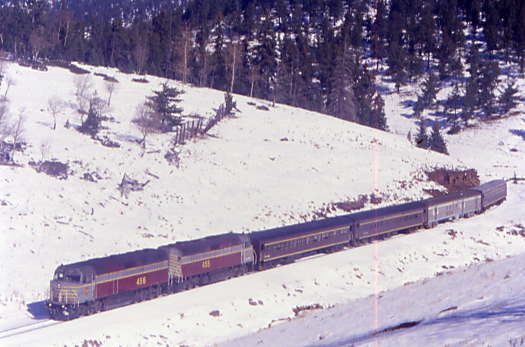
10/28/2006 Chris Parker and I awoke at 5:45 AM and after we prepared for the day ahead, we went to McDonald's for a breakfast of hot cakes and sausage to go. Inside we met a few other passengers who were getting breakfast before boarding the train. We drove into Alamosa and parked at the train station and offices of the San Luis and Rio Grande Railroad, meeting Bart Jennings and around the corner met Sarah, who checked us in. I walked across the street to a bench in front of the former Rio Grande train station and sat down to have my breakfast. The juice was ice cold in the 18 degree temperature, but the hot cakes quickly turned into cold cakes in this pre-dawn. I ate quickly then walked back across the street to wait for our train to be bought in. About 6:40 AM, our train backed into the station with everyone heading to board. I used our Trainweb digital camera for a pre-dawn view of our train at Alamosa.
Following that picture, I recorded the consist of the train for today. The train had SLRG F40PHs 455 and 456, SLRG Coach RPCX 2968, UP baggage 4904 and SLRG coaches RPCX 2948 and 5060. I boarded the 2948 which was heated and chose my seat. Bart came in and told us there was a change of plans for the day. We would first go west to Monte Vista, then go east past La Veta, then back to Alamosa before heading south to Antonito and the south end of the track at the Harborlite plant. At 7 AM, the train headed west towards Monte Vista. I went to the rear platform of the 5060 to enjoy the sunrise on a very chilly morning.
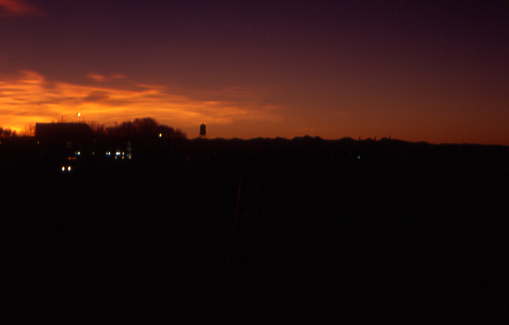
The sunrise began as we went over a grade crossing with third rails left over from the old dual gauge of the Denver and Rio Grande.
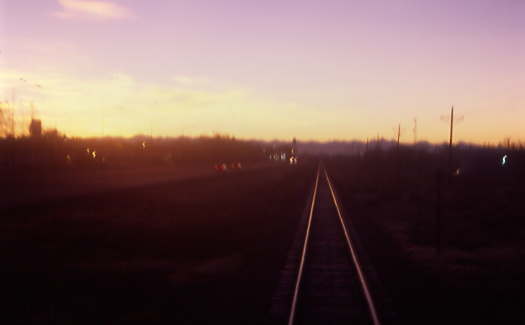
The rails gleamed in the predawn light.
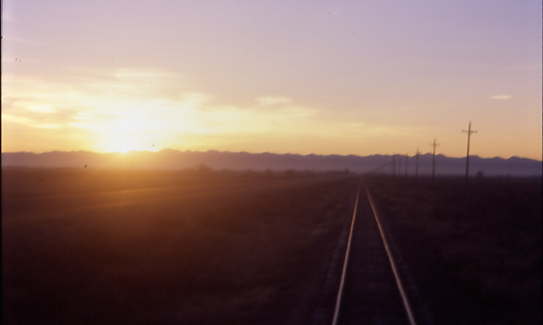
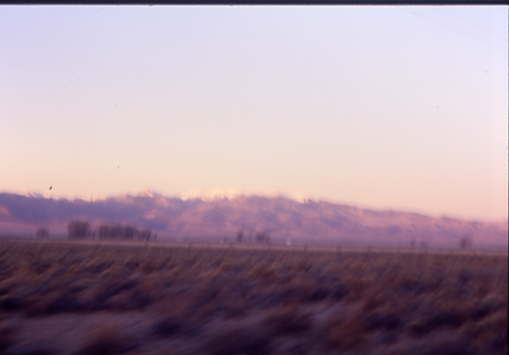
As the sun rose, the mountains to the southwest were pink in color.
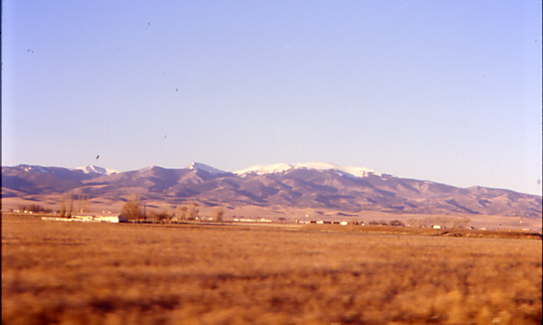
The view of the same mountains a few minutes and miles later.
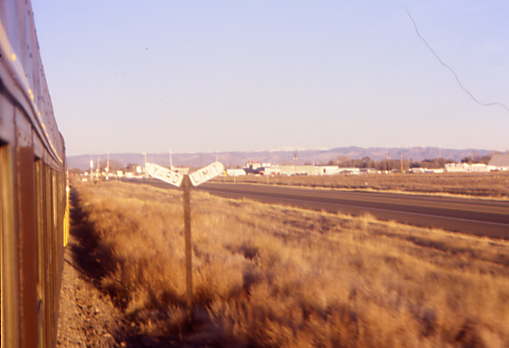
Later we came to the Yard Limit sign for Sugar Junction, the connection to San Luis Central Railroad.
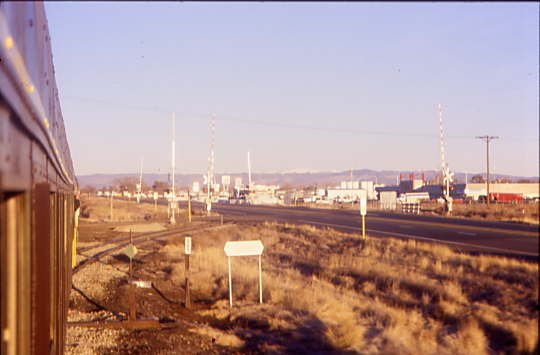
Our train ran through Sugar Jct.
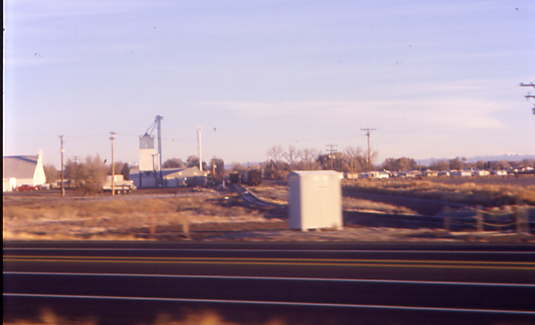
Freight cars on the San Luis Central Railroad which we will be riding over tomorrow.
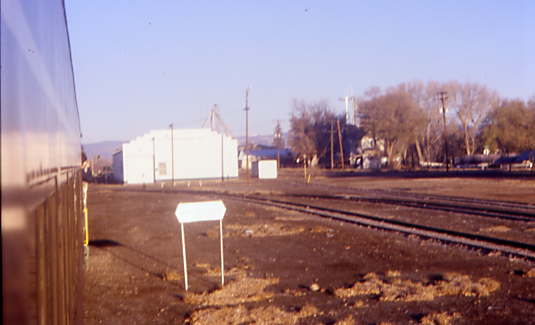
The train arrived at Monte Vista where the power would run around the train and we would do a Photo Runby while it was done.
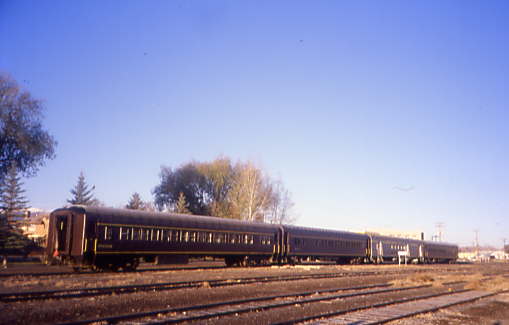
Our train cars wait for the power to be run around them at Monte Vista.
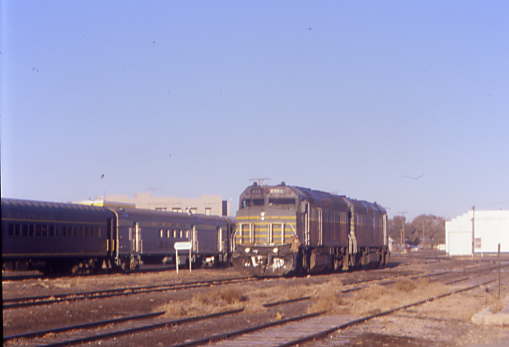
The power running around our train at Monte Vista.
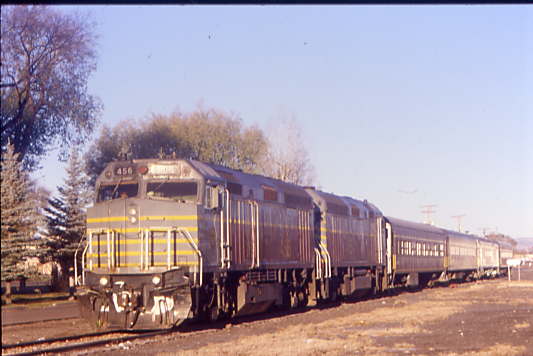
With the power now reconnected, SLRG 466 now led the train east towards La Veta.
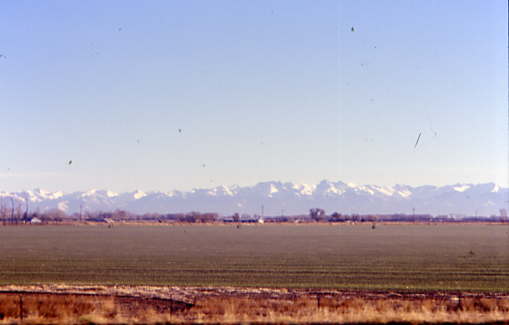
One could see the mountains north in the distance. The San Luis Valley is larger than the state of Connecticut.
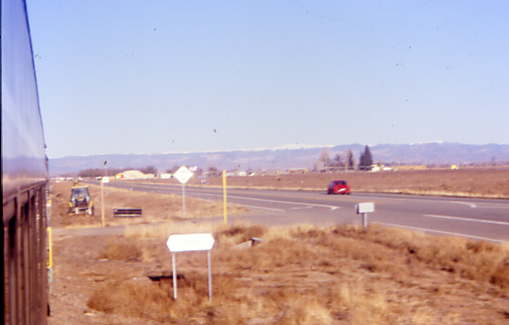
Our train followed US 190 back toward Alamosa.
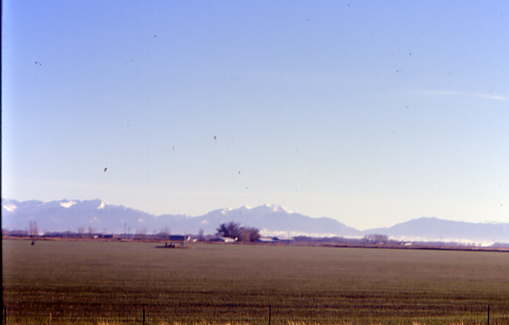
The view looking up the San Luis Valley north.
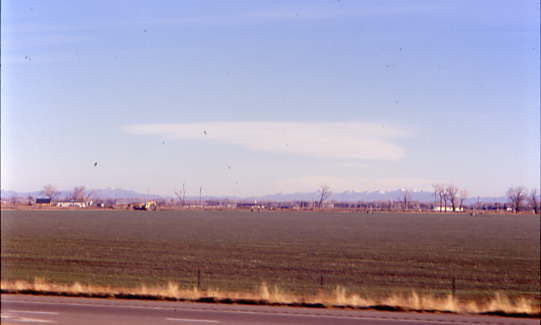
It is a very unique Alpine Valley.
The train was passing the Best Western Alamosa Inn where Chris and I were staying for our two nights here.
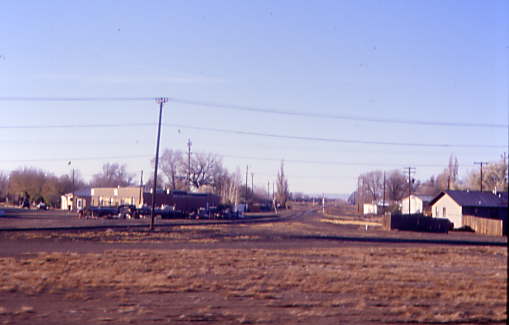
We continued into Alamosa and passed the junction with the line to Antonito which we would take later this afternoon.
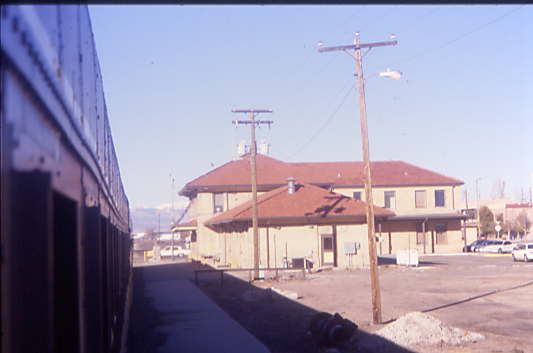
The train then stopped at the former Rio Grande station to pick up some local officials from the Alamosa Chamber of Commerce.
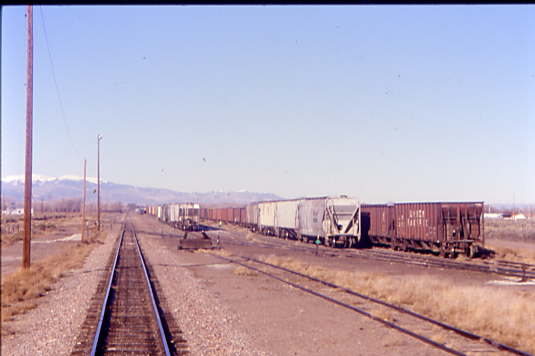
Our train left Alamosa and went through the yard before crossing the Rio Grande River.
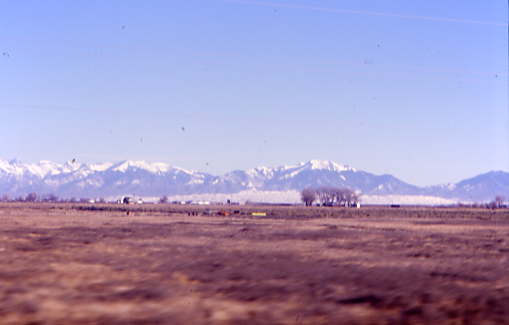
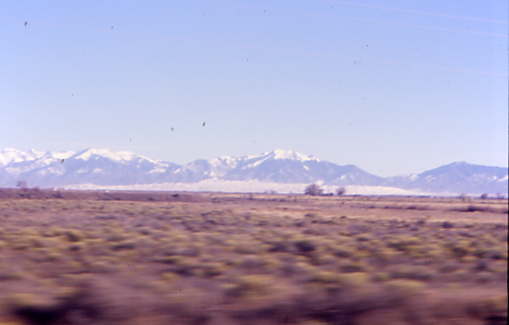
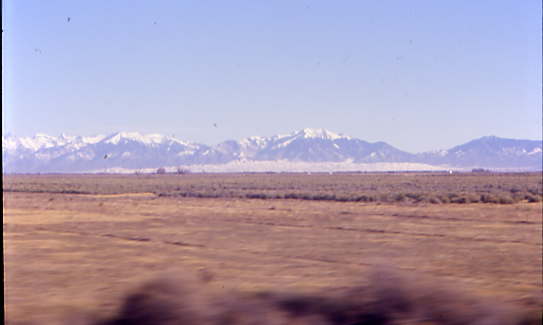
The train crossed the San Luis Valley and to our north, the Great Sand Dunes National Park was visible, but covered with snow. We would visit there tomorrow after the San Luis Central trip.
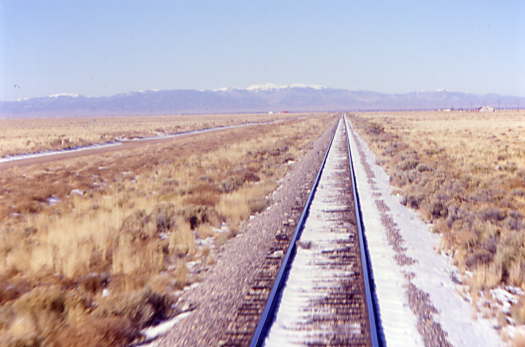
As we neared Blanca, I was sitting in the rear coach all by myself, I closed my eyes and felt like I was riding on the San Juan Express back in the 1930's.
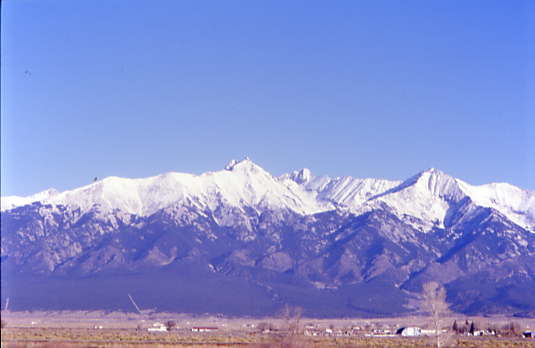
I photographed Mount Blanca watching over the San Luis Valley before we went through Blanca.
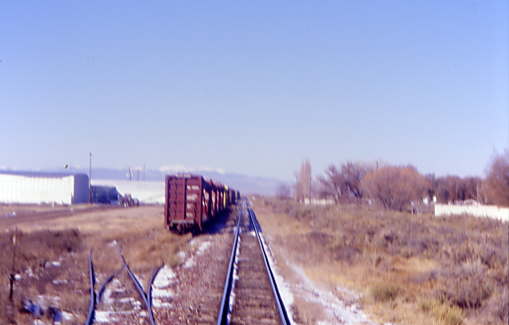
Later we passed through Fort Garland.
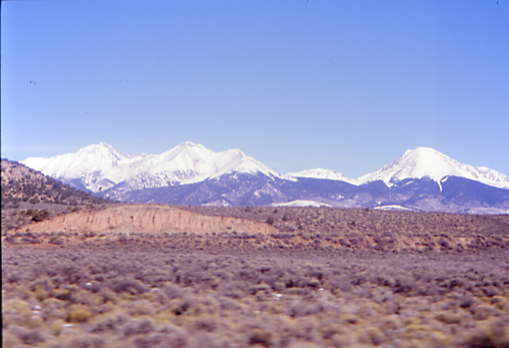
The mountains to our southeast.
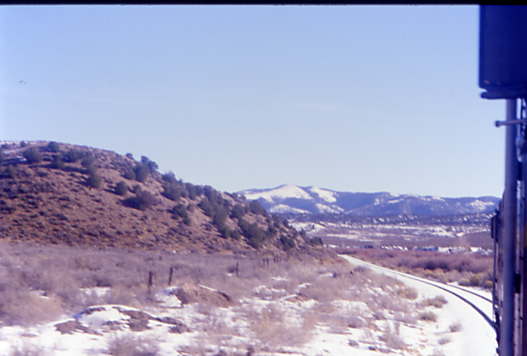
The train approached the first hillside as we started the climb over La Veta Pass.
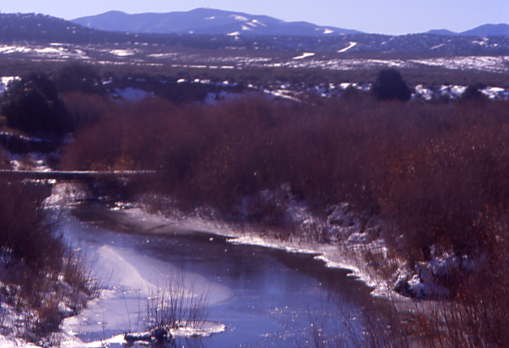
The route followed Sangre de Cristo Creek which we would follow to Wagon Creek.
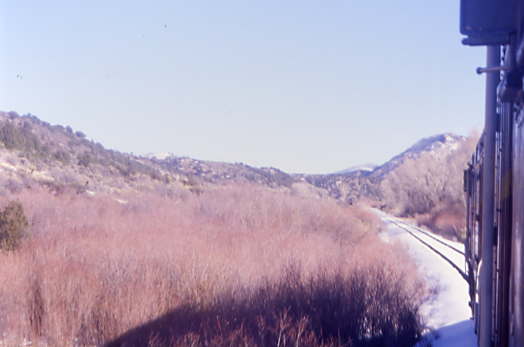
Our train was now running along Wagon Creek.
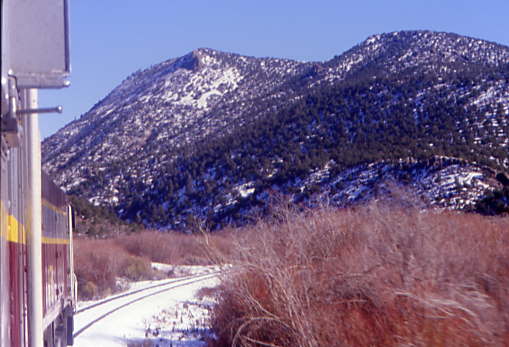
The train now started its turning and climbing out of the San Luis Valley.
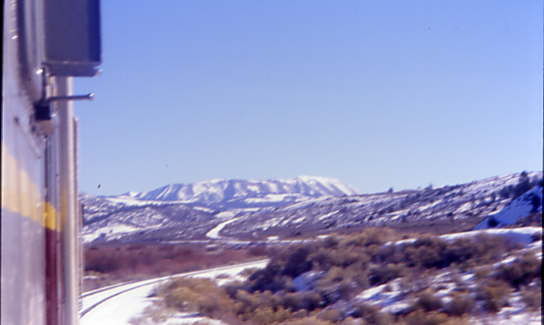
Our route was now headed into the snowy mountains.
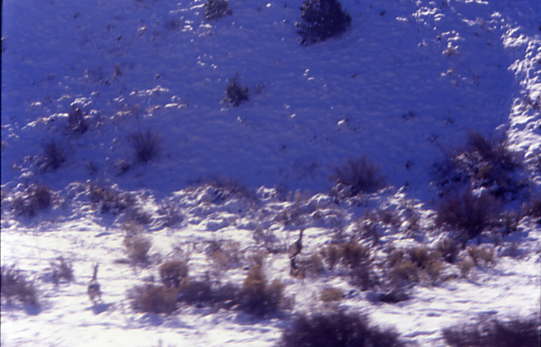
We startled some deer who quickly ran away from the tracks.
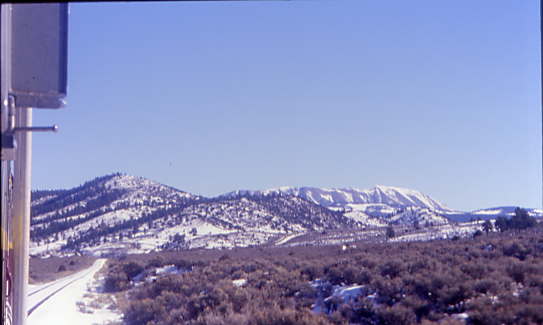
We came into Russell, where the original 1876 narrow gauge rail line turned left to climb over South La Veta Pass. It was over 4 percent in places and had major curves. The new standard gauge line was built over La Veta Pass in 1899 on a lower grade. That is why we made the turn to the right. The old narrow gauge line followed the route of what is today's US 160 up the west slope of South La Veta Pass.
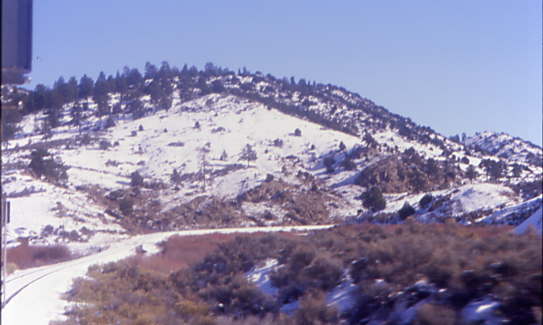
As we followed Wagon Creek, there was a great view back at our train as we climb higher with the mountains behind.
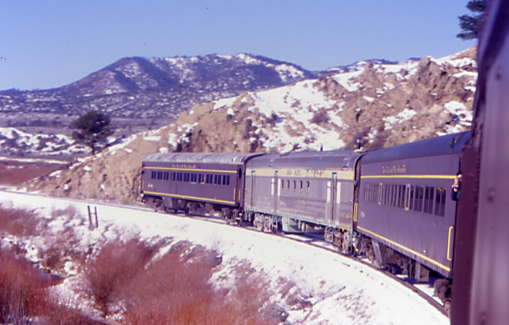
A look back at our train as we climb higher.
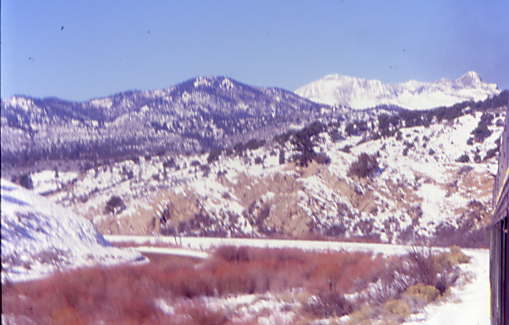
What a fantastic view as we climb higher.
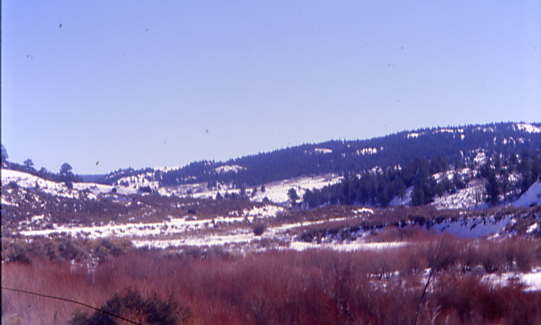
The route ahead.
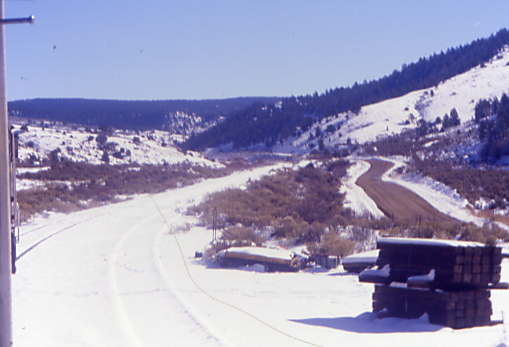
At Sierra siding, there were wooden ties were waiting to be installed.
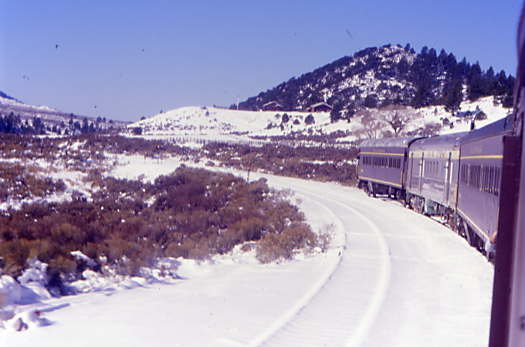
The train at Sierra.
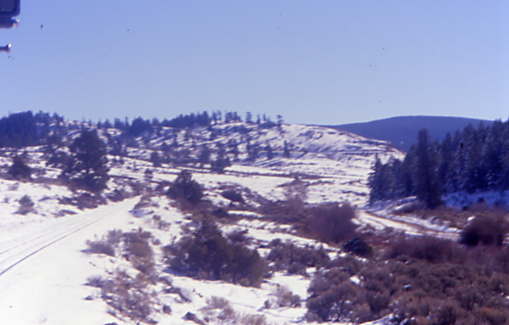
The view ahead as we continue to climb.
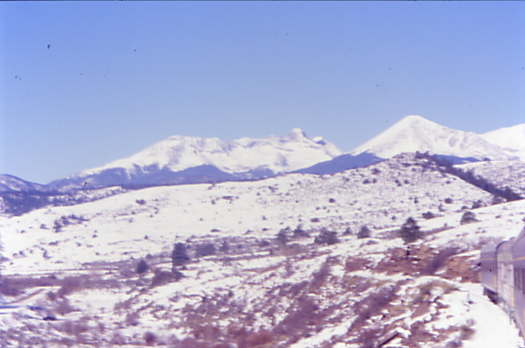
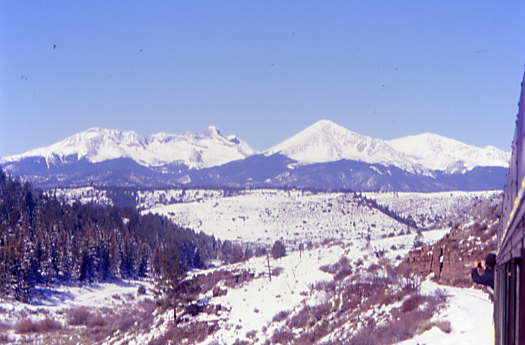
There were breathtaking views looking down the grade behind us.
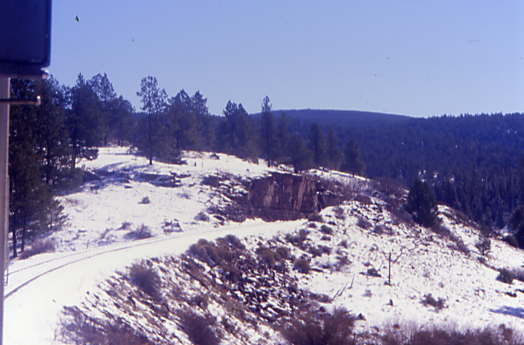
Then the train went through a rock cut,
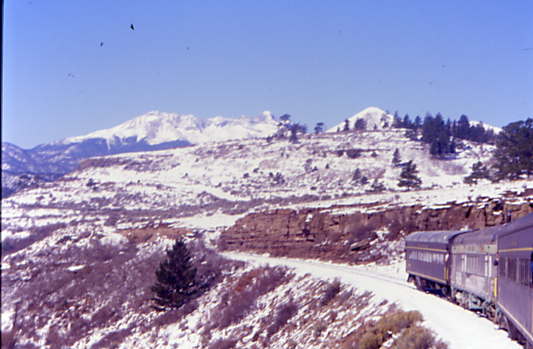
The look back after passing through it.
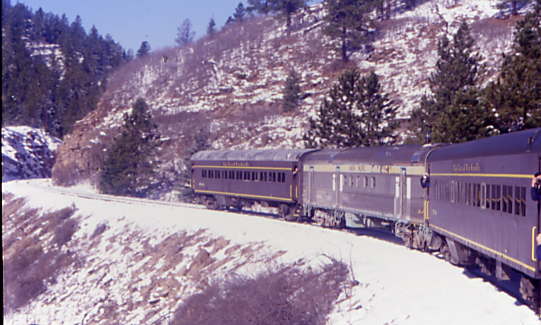
The train rolled high along a rocky ledge.
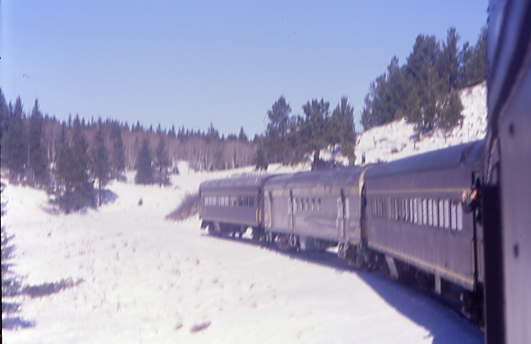
Another look back as the train rounded the 12 degree loop below Fir/La Veta Pass.
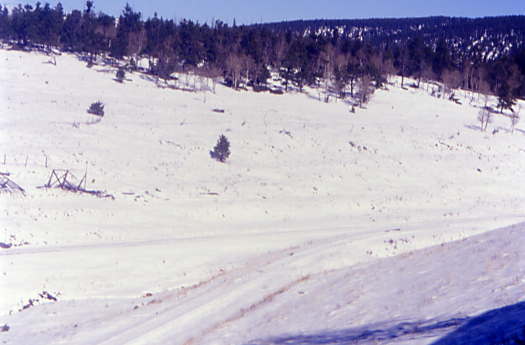
Here, there is the former track for turning helpers and snow equipment.
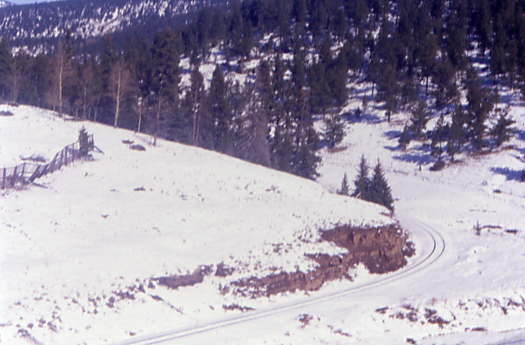
The view looking down at where we had been. We all detrained for a very unique Photo Runby at Fir.
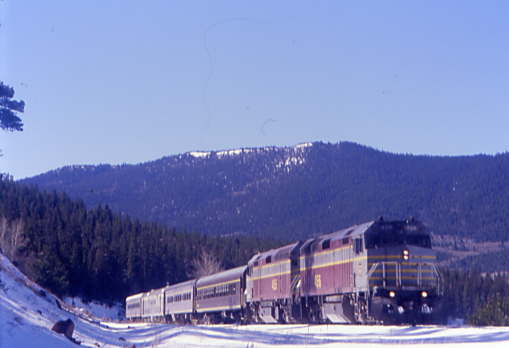
The first photograph I took was the train backing by our photo line. Then everyone moved over to the watch the train back down around the loop and pass below us.
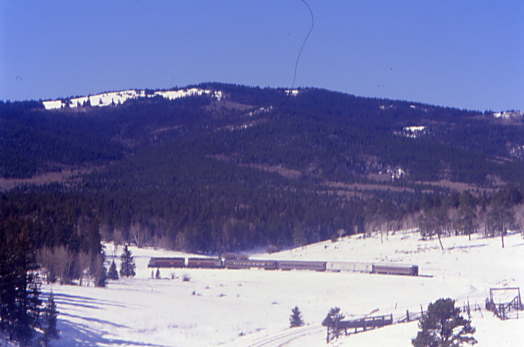
Next the train backed down the 12 degree loop before it left the loop.
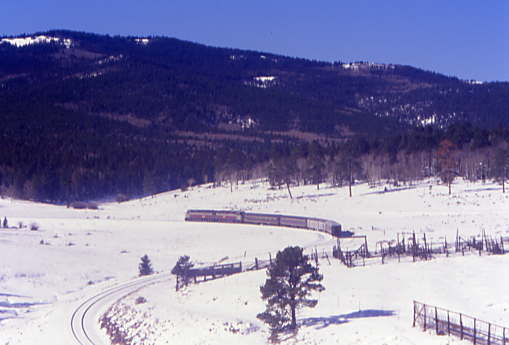
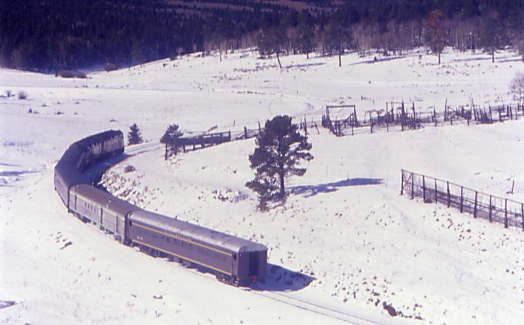
Still backing down out of the loop.
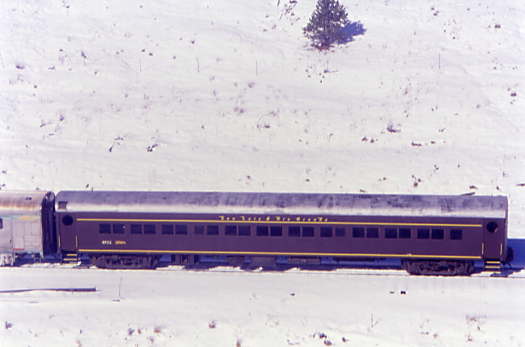
SL&RG Coach RPCX 2968.
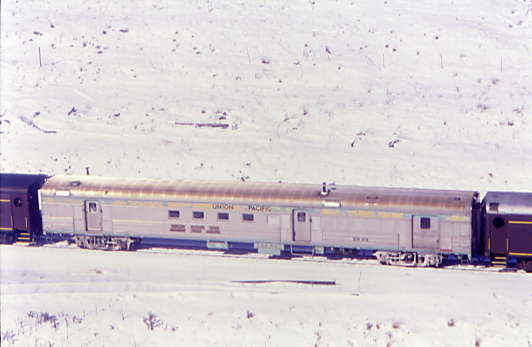
Union Pacific 4904.
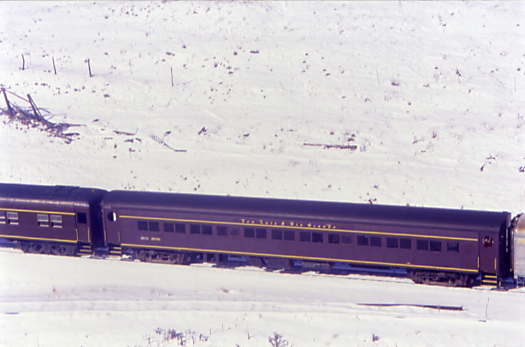
SL&RG Coach 2948.
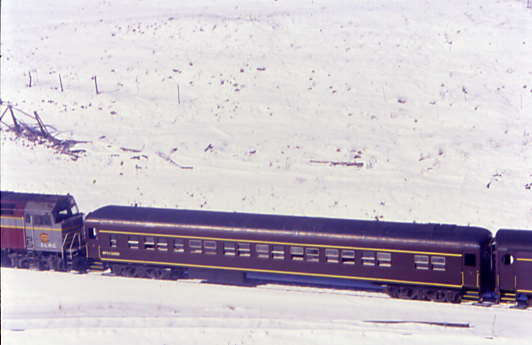
SL&RG Coach 5060.
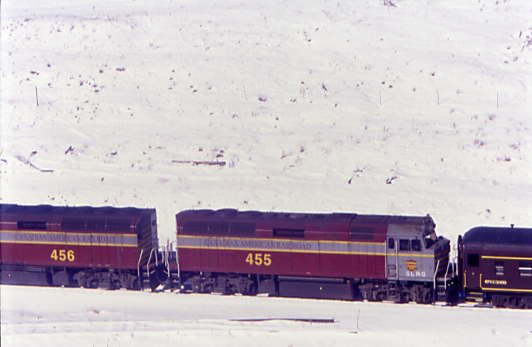
SL&RG F-40PH 455.
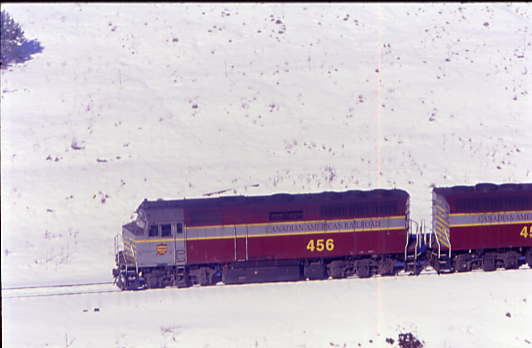
SL&RG F-40PH 456. The train continued to back around the corner and then disappeared out of sight. With a honk of its horn, the train started the Photo Runby.
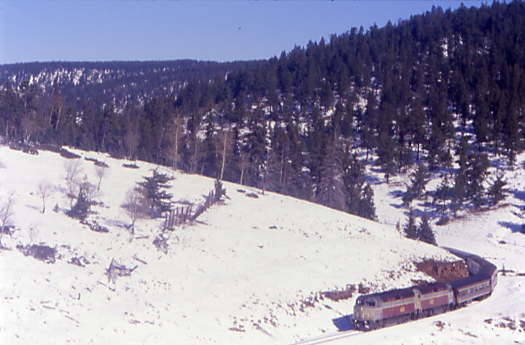

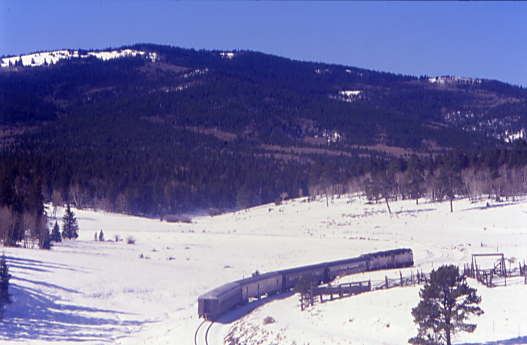
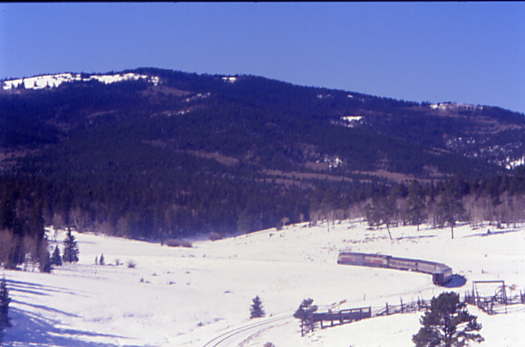
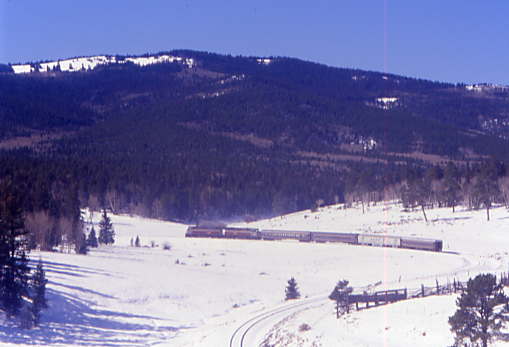
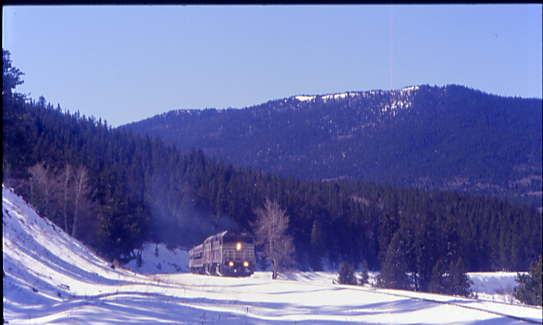
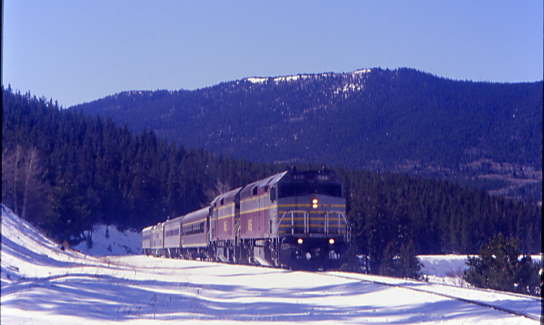
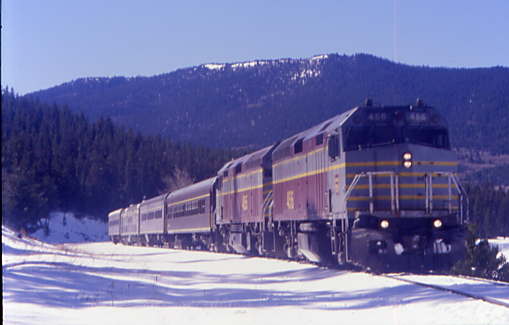
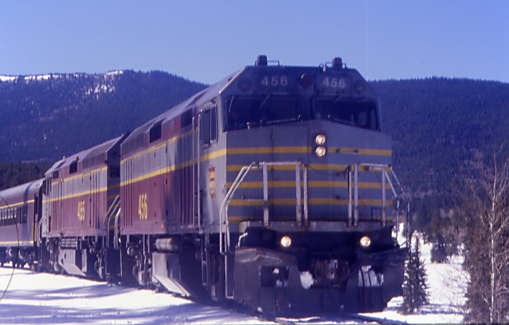
After that fantastic Photo Runby at Fir, we crossed the 9,242 foot summit at Fir/La Veta Pass. We will now start down grade but that will be in the next part of the story.